Steinway upright model ‘K’ piano serial #127696
(mfg. yr 1907)
June 2012
Page 4- Piano Bottom Board and Casters
The bottom board was a surprise when the piano was tilted on to its back – termites had eaten voids into the wood! The is the first time we had ever seen this type of damage.
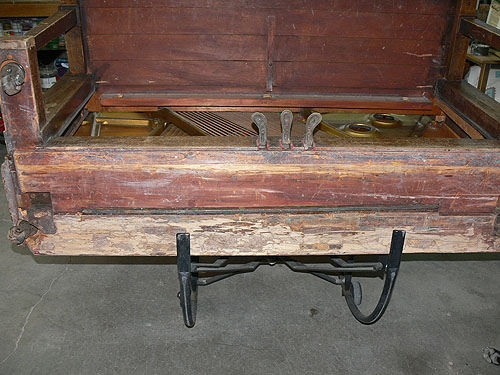
Termite or carpenter ant damage
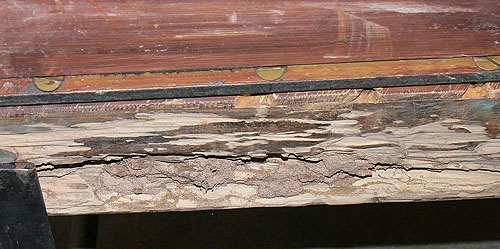
Closeup of wood damage
Routed out bottom board with block ready to go into position (below). After a sanding and more routing out these voids, wood blocks were glued and screwed into place. The purpose of the blocks was to repace the largest voids and also to be a firm support for a dolly when being moved.
The damaged area had to be wire brushed many times until debris stopped coming off the irregular surface. Very important! The Bondo needs a fairly clean surface on which to adhere. All of the ruts provided a nice grab area for the Bondo.
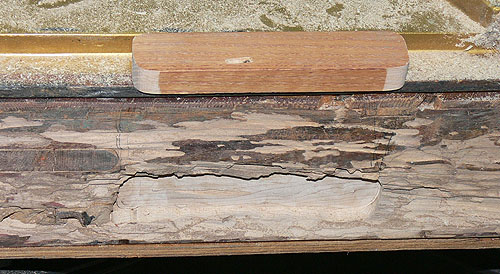
Left side wood block, ready to glue and screw.
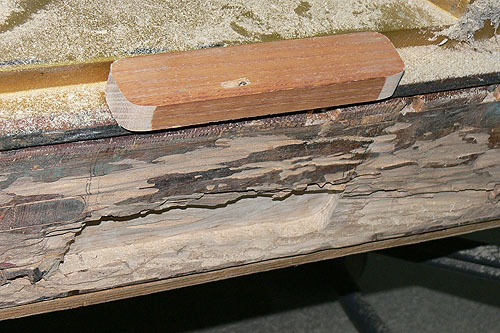
Right side block ready to install.
These blocks were made from a piece of scrap wood, about 14" cut in half. The wood is a nice dry chunk of oak, DO NOT use pine here! WAY too soft to support a heavy piano like this one!
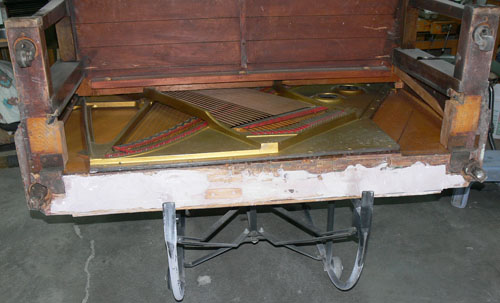
Both pieces of wood are in place, one barely visible after inititial
applications of bondo. Bottom board removed.
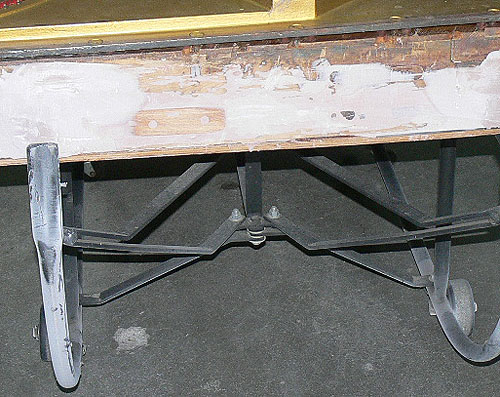
Closeup of a few applications of Bondo.
In the picture below, the Bondo has filled about 98% of the ruts. the time to "Final Finish" was not taken since it's not a visible surface but it is level and flat, a useable surface.
Note the steel stock used to create a dam for leveling just to the left of the caster on the bottom of the piano. There was too much damage which extended to the rear of the piano rounding off the bottom excessively.
We used the better part of a quart of bondo to fill this in. There is some waste in scraping the surface flat with every application.
The Bondo becomes the wood bottom, the piano once again has a nice flat bottom.
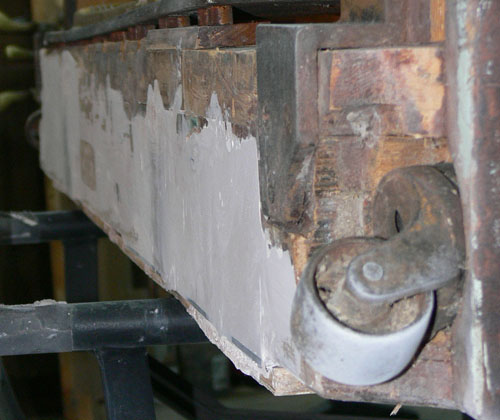
Fully filled in area with Bondo, will be painted next. Note original caster.
The one-eyed caster, very old and not the best of designs.
It's very common to have to replace the rear casters on older uprights pianos. About 90% of an upright piano's weight is handled by the two rear casters. The front ones last a long time.
After many years of abuse and sometimes dropped by movers, the rear casters simply give out OR the screws come loose causing the caster to rock OR the caster spindle gets bent. Then the caster gets stuck develops a flat spot and never rolls again.
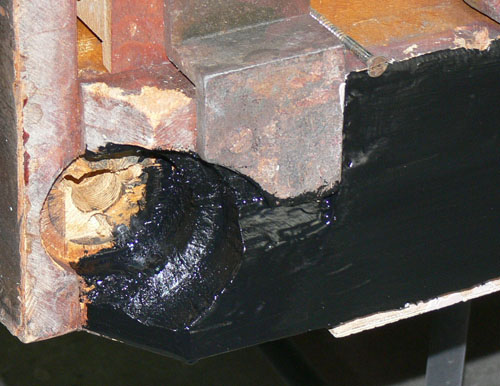
Left bottom, old caster removed.
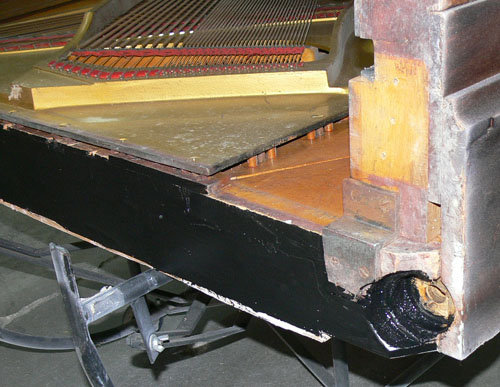
Right bottom painted, ready for new casters.
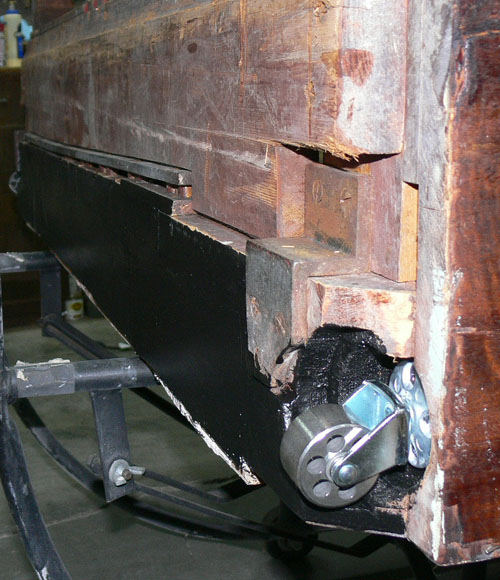
Fully painted and new rear casters installed
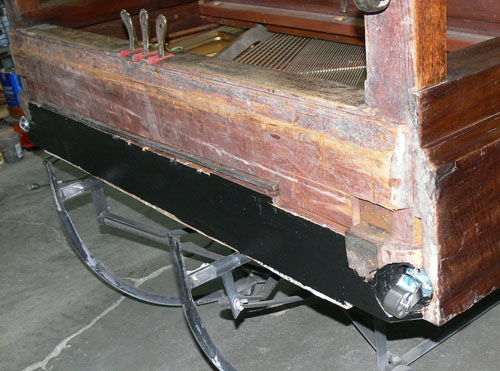
Bottom all done, new casters, pedals polished and trapwork secured
OK, so now the bottom is filled with Bondo where need be and a fresh coat of flat black paint applied over the bondo. The bottom board is back in place and the piano is almost ready to be stood back up.
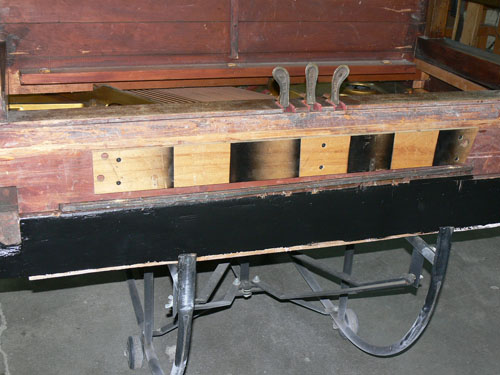
An additional plank was added to the front part of the bottom board to be
level with the repair and to give stability during a move.
Detail of added plank to support for moving. Typically, pianos like this one and some Mason & Hamlins had these bottoms which make it difficult for movers to support while on a dolly.
The last page will show final cleanup and all of the adustments get made now. |